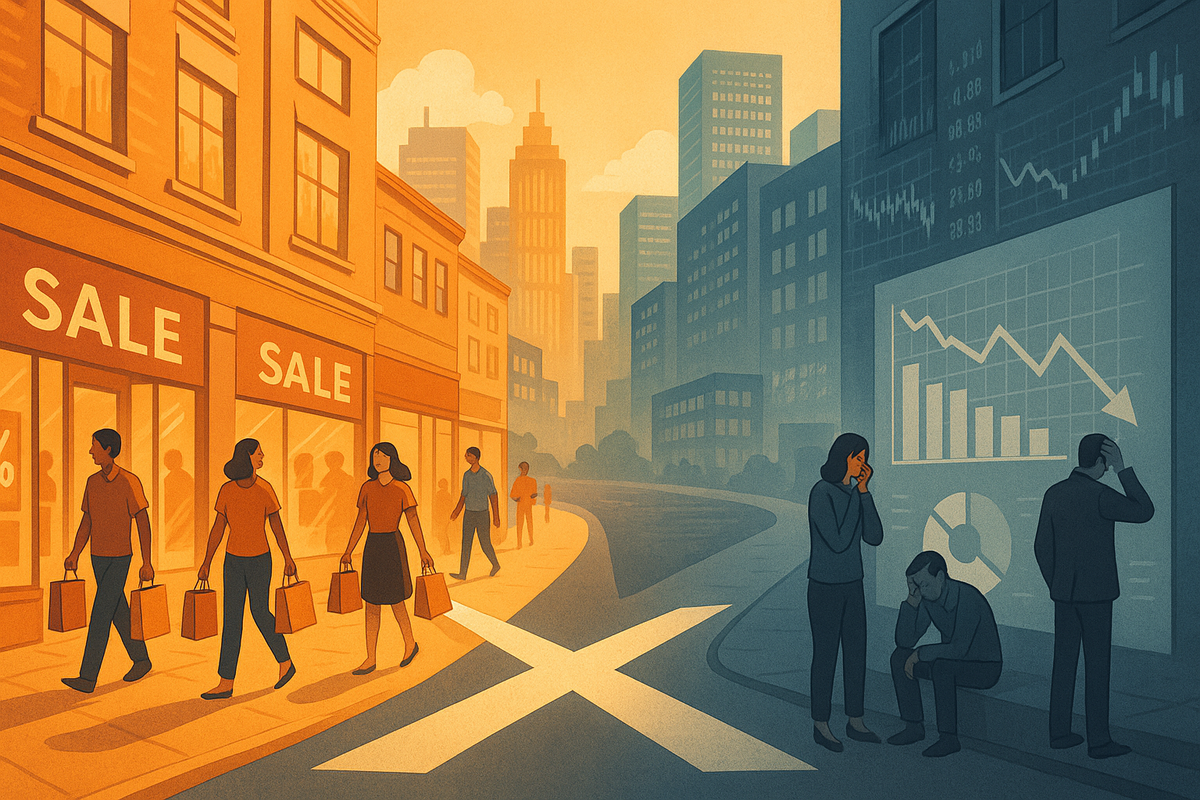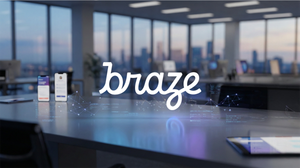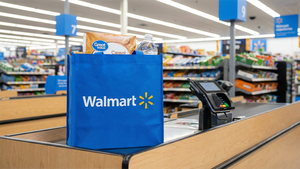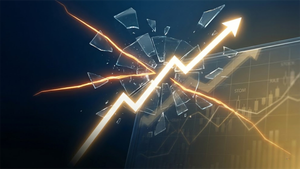
The latest economic indicators present a perplexing picture for the U.S. economy, with a notable divergence between robust consumer spending and a sharp decline in consumer sentiment. While strong retail sales figures for July 2025 suggest a resilient consumer base actively driving economic activity, the significant drop in consumer confidence in August 2025 raises concerns about the sustainability of this spending and the broader economic outlook. This contradictory data leaves economists and investors grappling with the true health of the economy and the likelihood of a looming recession.
The Conflicting Signals: What Happened and Why It Matters
The economic landscape is currently characterized by two powerful, yet opposing, forces. On one hand, the U.S. Census Bureau reported a robust 0.5% increase in retail purchases in July 2025, building on an upwardly revised 0.9% gain in June. This strong performance, with gains across nine out of thirteen categories including motor vehicles, online retail, and general merchandise stores, underscores the continued willingness of consumers to spend, a critical driver of the nation's Gross Domestic Product (GDP). This data initially provided a sense of relief, suggesting that the economy was reaccelerating into the second half of the year, defying earlier fears of an immediate slowdown.
However, this optimism was quickly tempered by the University of Michigan's Consumer Sentiment Index for August 2025, which plummeted to a four-month low of 58.6. This sharp deterioration in consumer confidence is primarily attributed to surging inflation expectations, with 12-month inflation projections climbing to 4.9%, and growing anxieties about the job market. This psychological shift is crucial because consumer expectations often dictate future spending patterns. When confidence wanes, consumers tend to become more cautious, prioritizing savings and deferring discretionary purchases.
The immediate market reaction to this conflicting data has been one of uncertainty. While the strong retail sales initially boosted equities, particularly in the retail and consumer discretionary sectors, the subsequent drop in consumer sentiment introduced a layer of caution. Investors are now closely watching for signs of whether the decline in confidence will translate into a tangible slowdown in spending in the coming months. Key players involved in analyzing and reacting to these figures include the Federal Reserve, which considers these indicators when formulating monetary policy, and various financial institutions and analysts who are revising their economic forecasts. The divergence highlights a critical challenge for policymakers: how to interpret and respond to an economy that appears strong on the surface but is underpinned by growing consumer apprehension.
Winners and Losers in an Uncertain Economy
The current economic climate, marked by strong retail sales but declining consumer sentiment, creates a mixed bag of potential winners and losers among public companies.
Companies in the consumer staples sector, such as Walmart (NYSE: WMT) and Procter & Gamble (NYSE: PG), might emerge as relative winners. Even with declining sentiment, consumers still need essential goods, and these companies often see stable demand during periods of economic uncertainty. Their business models are less susceptible to discretionary spending cuts, and they may even benefit from consumers trading down from more expensive brands. Similarly, discount retailers like Dollar General (NYSE: DG) could see increased foot traffic as consumers become more price-sensitive.
Conversely, companies heavily reliant on discretionary spending are likely to face headwinds. This includes sectors such as luxury goods, travel and leisure, and certain segments of automotive. For instance, Tesla (NASDAQ: TSLA) and other high-end car manufacturers could see a slowdown in sales if consumers postpone large purchases due to economic anxieties. Airlines like Delta Air Lines (NYSE: DAL) and cruise lines such as Carnival Corporation (NYSE: CCL) might experience a dip in bookings if consumers cut back on non-essential travel.
The financial sector also faces a nuanced outlook. Banks like JPMorgan Chase & Co. (NYSE: JPM) might see increased loan defaults if economic conditions worsen and unemployment rises, but they could also benefit from higher interest rates if the Federal Reserve continues its hawkish stance to combat inflation. Companies in the technology sector, particularly those offering subscription services or essential software, might be more resilient, but those reliant on advertising revenue or large enterprise spending could be vulnerable to corporate belt-tightening. Ultimately, companies with strong balance sheets, diversified revenue streams, and a focus on value will be better positioned to navigate the choppy waters ahead, while those heavily exposed to discretionary consumer spending or with high debt levels may struggle.
Industry Impact and Broader Implications
The current economic dichotomy of strong retail sales juxtaposed with plummeting consumer sentiment has significant implications that ripple across various industries and the broader economic landscape. This event fits into a broader trend of economic uncertainty, where traditional indicators are often sending mixed signals, making it challenging for businesses and policymakers to chart a clear course.
One of the most immediate ripple effects is on consumer-facing industries. While July's retail sales provided a temporary boost, the August sentiment drop suggests that this momentum may not be sustainable. Retailers, particularly those in the discretionary segment, will be closely watching their sales figures in the coming months for signs of a slowdown. This could lead to increased promotional activity, inventory adjustments, and potentially a more cautious approach to hiring and expansion. The housing market, already sensitive to interest rate fluctuations, could also see further cooling if consumer confidence in the future economy and job security diminishes, impacting demand for new homes and renovations.
From a regulatory and policy perspective, this conflicting data presents a dilemma for the Federal Reserve. The strong retail sales might argue for continued vigilance against inflation, potentially supporting further interest rate hikes. However, the declining consumer sentiment, coupled with fears of a weakening job market, could push the Fed towards a more dovish stance to avoid tipping the economy into a recession. The balancing act between controlling inflation and supporting economic growth becomes even more precarious. Government policymakers will also be under pressure to consider fiscal measures that could bolster consumer confidence or provide targeted relief.
Historically, periods of significant divergence between "hard" economic data (like retail sales) and "soft" survey data (like consumer sentiment) have often preceded economic shifts. While strong current spending can mask underlying anxieties, a sustained decline in confidence can eventually translate into reduced spending, investment, and hiring. Comparisons can be drawn to periods before past recessions where consumer confidence began to wane even as some economic indicators remained robust. This time, the added layer of persistent inflation makes the situation particularly complex, as consumers are not only worried about the future but also about the erosion of their purchasing power in the present. The broader implication is a heightened risk of an economic slowdown, even if not an immediate recession, as businesses and consumers react to the perceived instability.
What Comes Next
The path forward for the U.S. economy, given the conflicting signals from retail sales and consumer sentiment, is fraught with both challenges and opportunities. In the short term, the key will be to observe whether the decline in consumer sentiment translates into a tangible slowdown in retail sales in the coming months. If August and September retail figures show a significant deceleration, it would confirm that consumer anxieties are indeed impacting spending behavior, increasing the likelihood of a more pronounced economic slowdown. Businesses, particularly those in consumer discretionary sectors, will need to adapt quickly, potentially by adjusting inventory levels, re-evaluating pricing strategies, and focusing on cost efficiencies.
In the long term, the trajectory of inflation and the labor market will be paramount. If inflation remains stubbornly high, it will continue to erode purchasing power and weigh on consumer confidence, regardless of current spending levels. Conversely, if inflation begins to moderate, it could provide a much-needed boost to sentiment and potentially sustain consumer spending. The labor market's resilience will also be critical; a significant weakening in employment could quickly turn consumer apprehension into widespread economic contraction. Potential strategic pivots for businesses might include diversifying supply chains to mitigate inflationary pressures, investing in automation to offset rising labor costs, and focusing on customer retention in a more competitive environment.
Market opportunities may emerge in defensive sectors that tend to perform well during economic downturns, such as utilities, healthcare, and consumer staples. Investors might also look for companies with strong balance sheets and consistent cash flows that can weather economic volatility. Conversely, challenges will persist for highly cyclical industries and those with significant exposure to discretionary consumer spending. Potential scenarios range from a "soft landing," where inflation gradually subsides without a severe recession, to a more challenging "hard landing" characterized by a deeper economic contraction. The most likely outcome will depend on the interplay of monetary policy, inflationary pressures, and the evolving psychology of the American consumer.
Conclusion
The recent economic data, characterized by robust July retail sales but a sharp decline in August consumer sentiment, paints a complex and somewhat contradictory picture of the U.S. economy. The key takeaway is that while current consumer spending remains strong, underlying anxieties about inflation and the job market are growing, posing a significant risk to future economic activity. This divergence highlights the delicate balance the economy is currently navigating, with the potential for either a continued, albeit slower, expansion or a more pronounced downturn.
Moving forward, the market will be closely watching for several critical indicators. The most immediate concern is whether the dip in consumer confidence will translate into a sustained slowdown in retail sales in the coming months. Investors should also pay close attention to inflation data, particularly the Consumer Price Index (CPI) and Producer Price Index (PPI), to gauge whether price pressures are easing. Furthermore, labor market reports, including unemployment rates and wage growth, will provide crucial insights into the health of the job market and its potential impact on consumer spending power.
The significance of this period lies in its potential to be a turning point. While the economy has shown remarkable resilience, the growing disconnect between current spending and future expectations suggests that the path ahead will be challenging. Companies and investors alike will need to remain agile, adapting their strategies to a potentially more volatile economic environment. The lasting impact will depend on how effectively policymakers can navigate the twin challenges of inflation and slowing growth, and how quickly consumer confidence can be restored. The coming months will be critical in determining whether the U.S. economy can achieve a soft landing or if it is indeed heading for a more turbulent period.





